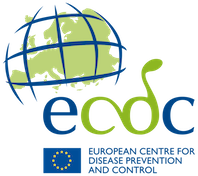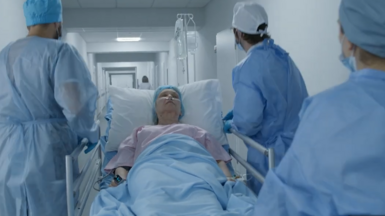Postcard from the field: Arbovirus and mosquito vector surveillance in Madagascar
Mosquitoes are key vectors of diseases like malaria, dengue, and Zika, making their surveillance vital for public health. Madagascar faces rising threats from arboviruses, but lacks robust monitoring systems. In December 2024, Natalia Marta Zmarlak-Feher from the Robert Koch Institute helped launch mosquito surveillance and arbovirus diagnostics as part of a global health initiative.
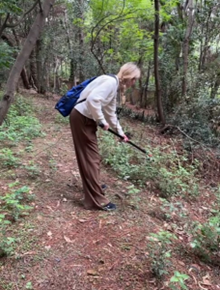
Mosquitoes are important vectors of several emerging and reemerging infectious diseases. The Aedes genus transmits arboviruses such as chikungunya, Zika, and dengue. Culex mosquitoes are known vectors for West Nile virus, while Anopheles species are responsible for transmitting Plasmodium parasites, which cause malaria in humans. Monitoring mosquito populations and the pathogens they carry is essential for generating knowledge that supports the implementation of effective prevention and control strategies, including vector control measures.
Madagascar faces health threats from viral vector-borne diseases such as chikungunya and dengue [1, 2], yet surveillance systems remain limited. In December 2024, Natalia Marta Zmarlak-Feher (EUPHEM cohort 2023) from the Robert Koch Institute (RKI) in Berlin, Germany, participated in a three-week field mission to Madagascar. This was part of the project ‘Assessing and Building Capacities: Madagascar Public Health System (ABCM)’, coordinated by the RKI under Germany’s Global Health Protection Program. The assignment was to support the team from the RKI’s Centre for International Health Protection, the Public Health Laboratory Support Unit (ZIG4), with setting up surveillance for Aedes mosquitoes and establishing laboratory diagnostics for arboviruses in mosquito vectors. This is her postcard from the field.
Methods
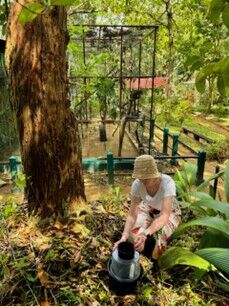
During the deployment, I worked closely with the ZIG4 team and local partners from the Malagasy Medical Analysis Laboratory (Laboratoire d’Analyses Médicales Malagasy, LA2M) and the National Malaria Control Program (Programme National de Lutte Contre le Paludisme).
Fieldwork was conducted in two urban locations: Antananarivo, the capital of Madagascar, and Toamasina, a port city on the country’s east coast. Laboratory analysis was conducted at LA2M in Antananarivo. My tasks included:
- Establishing outdoor mosquito collection using various trapping techniques. These included suction traps for adult mosquitoes, passive traps for gravid females, and active collection from mosquito resting sites using aspirators.
- Organising the transport of collected mosquitoes to the laboratory.
- Visually identifying the mosquito genera.
- Extracting genetic material from the mosquito specimens, followed by molecular identification using multiplex real-time PCR and reverse transcription multiplex real-time PCR. These methods were used to determine mosquito species [3] and detect the presence of chikungunya, dengue, and Zika viruses[4-6].
Results
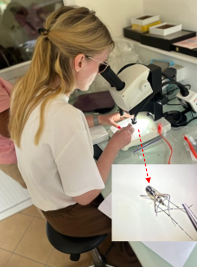
A total of 1 004 mosquitoes were collected during the fieldwork. Culex was the most common genus, making up 62 percent of the sample, followed by Aedes with 36.6 percent and Anopheles with 1.4 percent.
Species distribution varied by location. Aedes mosquitoes were mostly collected in Toamasina. The choice of collection method also influenced the number of mosquitoes collected. Active collection accounted for approximately 61 percent of the total catch.
All Aedes specimens were confirmed as Aedes albopictus through PCR analysis and tested negative for chikungunya, dengue, and Zika viruses.
These findings highlight important spatial differences in mosquito species composition. They also show that different collection techniques yield different results. These observations support the need for locally adapted vector surveillance strategies and continuous monitoring to better inform public health responses.
Discussion
This field mission provided me with a valuable opportunity to apply my laboratory knowledge in a practical setting and to gain deeper insight into operational aspects of field epidemiology and vector surveillance.
Working alongside Malagasy public health institutions and experts gave me a clearer understanding of the ecological, logistical, and technical challenges involved in mosquito control. It was especially rewarding to contribute to efforts that help build sustainable local capacity for laboratory-based surveillance.
References
- Ratsitorahina M, Harisoa J, Ratovonjato J, Biacabe S, Reynes JM, Zeller H, et al. Outbreak of dengue and Chikungunya fevers, Toamasina, Madagascar, 2006. Emerg Infect Dis. 2008;14(7):1135–7.
- Schwarz NG, Girmann M, Randriamampionona N, Bialonski A, Maus D, Krefis AC, et al. Seroprevalence of antibodies against Chikungunya, Dengue, and Rift Valley fever viruses after febrile illness outbreak, Madagascar. Emerg Infect Dis. 2012;18(11):1780–6.
- Kothera L, Byrd B, Savage HM. Duplex Real-Time PCR Assay Distinguishes Aedes aegypti From Ae. albopictus (Diptera: Culicidae) Using DNA From Sonicated First-Instar Larvae. J Med Entomol. 2017;54(6):1567–72.
- Lanciotti RS, Kosoy OL, Laven JJ, Panella AJ, Velez JO, Lambert AJ, et al. Chikungunya virus in US travelers returning from India, 2006. Emerg Infect Dis. 2007;13(5):764–7.
- Lanciotti RS, Kosoy OL, Laven JJ, Velez JO, Lambert AJ, Johnson AJ, et al. Genetic and serologic properties of Zika virus associated with an epidemic, Yap State, Micronesia, 2007. Emerg Infect Dis. 2008;14(8):1232–9.
- Leparc-Goffart I, Baragatti M, Temmam S, Tuiskunen A, Moureau G, Charrel R, et al. Development and validation of real-time one-step reverse transcription-PCR for the detection and typing of dengue viruses. J Clin Virol. 2009;45(1):61–6.
